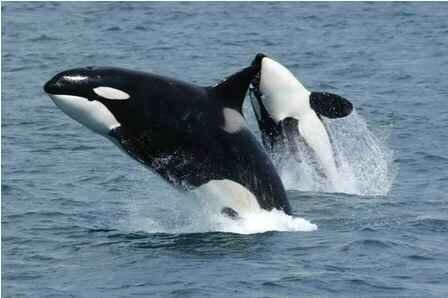If you’re one of “Free Willy” fans, then these following facts about whales would be really interesting for you to read. Whale is the common name for various marine mammals of the order Cetacea. The term “whale” sometimes refers to all cetaceans, but more often it excludes dolphins and porpoises, which belong to the suborder Odontoceti. All cetaceans have forelimbs modified as fins, a tail with horizontal flukes, and nasal openings on top of the head. To get to know more about this animal, here are some other facts about whales you should know.
Facts about whales 1: Appearance
Whales appeared 50 million years ago, having a common origin with the hippopotamus. About 40 million years ago whales were divided into baleen whales and toothed whales. The oldest known baleen whale is Mamalodon. The first gigantic baleen whales appeared 5 million years ago.
Facts about whales 2: Species
The largest whale is the blue whale, up to 33 m in length and 181 tons in weight. The smallest baleen whale is the Pygmy Right Whale, about 6 m in length and 3 tons in weight. The largest toothed whale is the sperm whale, which can reach 18 m in length and 50 tons in weight.
Facts about whales 3: Blue Whale’s Brain
Blue whale’s brain weighs 5 kg (12.5 pounds) while that of the sperm whale 7 kg (17.5 kg), representing the largest brain in nature. The head represents 40 % of the length of a right whale.
Facts about whales 4: Whale’s Lungs
The whales’ lungs can store at each inspiration 5,000 liters of air. They usually breathe at every 15 minutes but they can hold their breath up to over an hour in the case of the sperm whale.
Facts about whales 5: Birth
Whales give birth every 2-3 years. They need waters with temperatures of 22-25 Celcius degree to do this, that’s why offspring are born in shallow tropical waters (Carribean, Hawaii, Australia and others).
Facts about whales 6: Bowhead Whales
Bowhead whales which are 130 years old have been whaled and big whales are estimated to reach a longevity up to 200 years.Still, whales are the most long-living warm-blooded animals and only some reptiles (giant turtles) live longer.
Facts about whales 7: Baleen Whales
All baleen whales effectuate long migrations. They breed and give birth in subtropical-tropical waters and feed in cold waters. They orientate in their journeys towards the Sun, Moon and Earth’s electromagnetic field.
Facts about whales 8: Killer Whale
he so-called killer whales can be 9.5 m (32 ft) long, 6 tons heavy and have 50 dagger-like teeth.
Facts about whales 9: Singing
Whales are famous for their singing, especially the blue and humpback whales. Their song can have different reasons: getting a mate, social interaction, alarm, keeping inter-individual distance, feeding, prey location and so on.
Facts about whales 10: Breaching
Breaching (lunging) is an amazing whale behavior, when they leap out of water. Humpback, right and sperm whales do it more often than other species. Breaching is thought to have a role in communication. It is the most powerful animal action and has the role of intimidating adversaries or impress females.
Hope you found these whales facts really interesting and useful for your knowledge and research.










 www.PortlandPayday.Loans
www.PortlandPayday.Loans